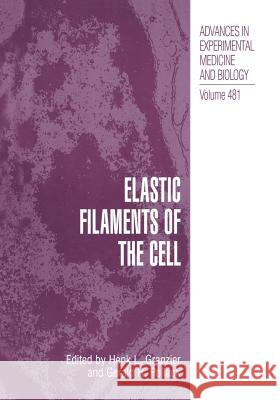Elastic Filaments of the Cell » książka
Elastic Filaments of the Cell
ISBN-13: 9781461369165 / Angielski / Miękka / 2012 / 425 str.
Elastic filaments refer mainly to titin, the largest of all known proteins. Titin was discovered initially in muscle cells, where it interconnects the thick filament with the Z-line. Titin forms a molecular spring that is responsible for maintaining the structural integrity of contracting muscle, ensuring efficient muscle contraction. More recently, it has become clear that titin is not restricted to muscle cells alone. For example, titin is found in chromosomes of neurons and also in blood platelets. This topic is fast becoming a focal point for research in understanding viscoelastic properties at the molecular, cellular, and tissue levels. In titin may lie a generic basis for biological viscoelasticity. It has become clear that titin may hold the key to certain clinical anomalies. For example, it is clear that titin-based ventricular stiffness is modulated by calcium and that titin is responsible for the altered stiffness in cardiomyopathies. It is also clear from evidence from a group of Finnish families that titin mutations may underlie some muscular dystrophies and that with other mutations chromatids fail to separate during mitosis. Thus, it is clear that this protein will have important clinical implications stemming from its biomechanical role. One aspect of this field is the bringing together of bioengineers with clinical researchers and biologists. Genetic and biochemical aspects of titin-related proteins are being studied together with front-line engineering approaches designed to measure the mechanics of titin either in small aggregates or in single molecules.











